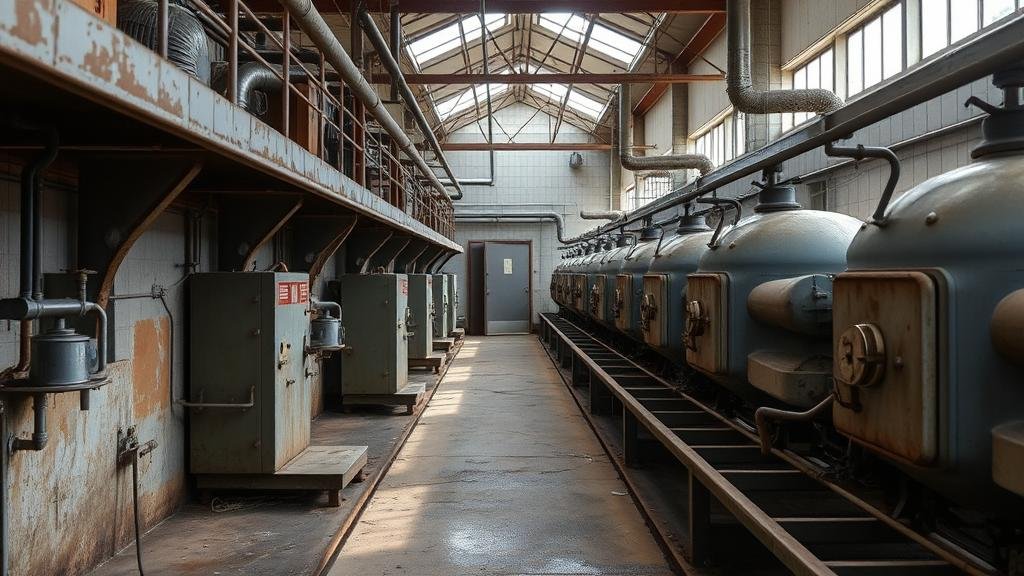Exploring Disused Dairy Processing Plants for Forgotten Equipment
Exploring Disused Dairy Processing Plants for Forgotten Equipment
The exploration of disused dairy processing plants presents a unique opportunity to uncover historical equipment and understand the evolution of dairy processing technology. This article aims to provide a comprehensive analysis of the significance of these facilities, the potential findings within, and their implications for the dairy industry and industrial heritage preservation.
Historical Context of Dairy Processing Plants
Dairy processing has a rich history in the United States and other dairy-centric nations. The first commercial dairy plant in the U.S. was established in 1851 in New York, marking the beginning of a rapid expansion in the dairy production industry. By the early 20th century, dairy processing had evolved significantly, with advances in pasteurization and refrigeration techniques revolutionizing the way milk and dairy products were handled.
The closing of numerous dairy processing facilities can be attributed to various factors, including industrial consolidation, changes in consumer demand, and the rise of large-scale agricultural operations. For example, the last dairy processing plant in Des Moines, Iowa, ceased operations in 2015, underscoring the decline of smaller operators in the face of corporate mergers. As a result, many of these plants sit abandoned, housing equipment that tells the story of technological progress and economic challenges.
Significance of Disused Equipment
The equipment left behind in abandoned dairy processing facilities can provide invaluable insights into historical manufacturing practices and technological developments. This equipment ranges from pasteurizers and homogenizers to separators and cheese-making vats.
- Pasteurizers: These units, which were pivotal in ensuring the safety of dairy products, serve as a testament to the advancements in food safety standards that emerged in the early 20th century.
- Homogenizers: The presence of these machines highlights the evolution of milk processing techniques designed to improve product consistency and stability.
For example, the homogenization process was first developed in the 1890s, and the equipment used for this process evolved significantly over the decades. Exploring abandoned plants can help document examples of this technological evolution.
Benefits of Exploring Abandoned Facilities
There are several benefits to exploring disused dairy processing plants for historical equipment:
- Preservation of Industrial Heritage: Collecting and documenting equipment can help preserve the history of dairy processing technology, contributing to the broader field of industrial archaeology.
- Education and Research: Information gleaned from disused facilities can serve as a valuable resource for researchers studying the history and development of food processing technologies.
- Recycling and Reusing Materials: In an era where sustainability is paramount, repurposing equipment can contribute to environmental preservation efforts.
Challenges in Exploring Abandoned Facilities
Despite the potential benefits, there are numerous challenges associated with exploring abandoned dairy processing plants:
- Safety Hazards: Many of these sites may contain hazardous materials, such as asbestos or outdated refrigeration equipment, that pose health risks to explorers.
- Legal Restrictions: The exploration of private property without permission can lead to legal repercussions, necessitating proper research and caution before undertaking any exploration.
- Degradation Over Time: Equipment can become significantly deteriorated due to neglect or exposure to the elements, complicating the documentation and recovery process.
Case Study: The Old Dairymen’s Plant in Wisconsin
A notable example of a successful exploration is the Old Dairymen’s Plant in Madison, Wisconsin, which closed in 2006. Local historians and engineering students have collaborated to document the site and its equipment, ultimately leading to a comprehensive report detailing the facilitys operational history and the significance of its machinery.
This initiative not only provided insight into past dairy processing practices but also contributed to curriculum development for engineering students, bridging the gap between history and applied sciences.
Conclusion and Actionable Takeaways
Exploring disused dairy processing plants for forgotten equipment holds immense value in preserving industrial heritage and understanding the evolution of dairy processing technologies. But, it is imperative that enthusiasts and researchers approach these explorations with an awareness of the associated challenges and risks.
As a call to action, individuals interested in this exploration should:
- Conduct thorough research into the history of local dairy processing facilities.
- Prioritize safety by using appropriate protective gear and respecting property laws.
- Engage with local historical societies or academic institutions to foster collaborations that enhance the exploration efforts.
Through responsible exploration, the forgotten equipment within these disused plants can be preserved and celebrated, offering a glimpse into the rich history of the dairy industry.



